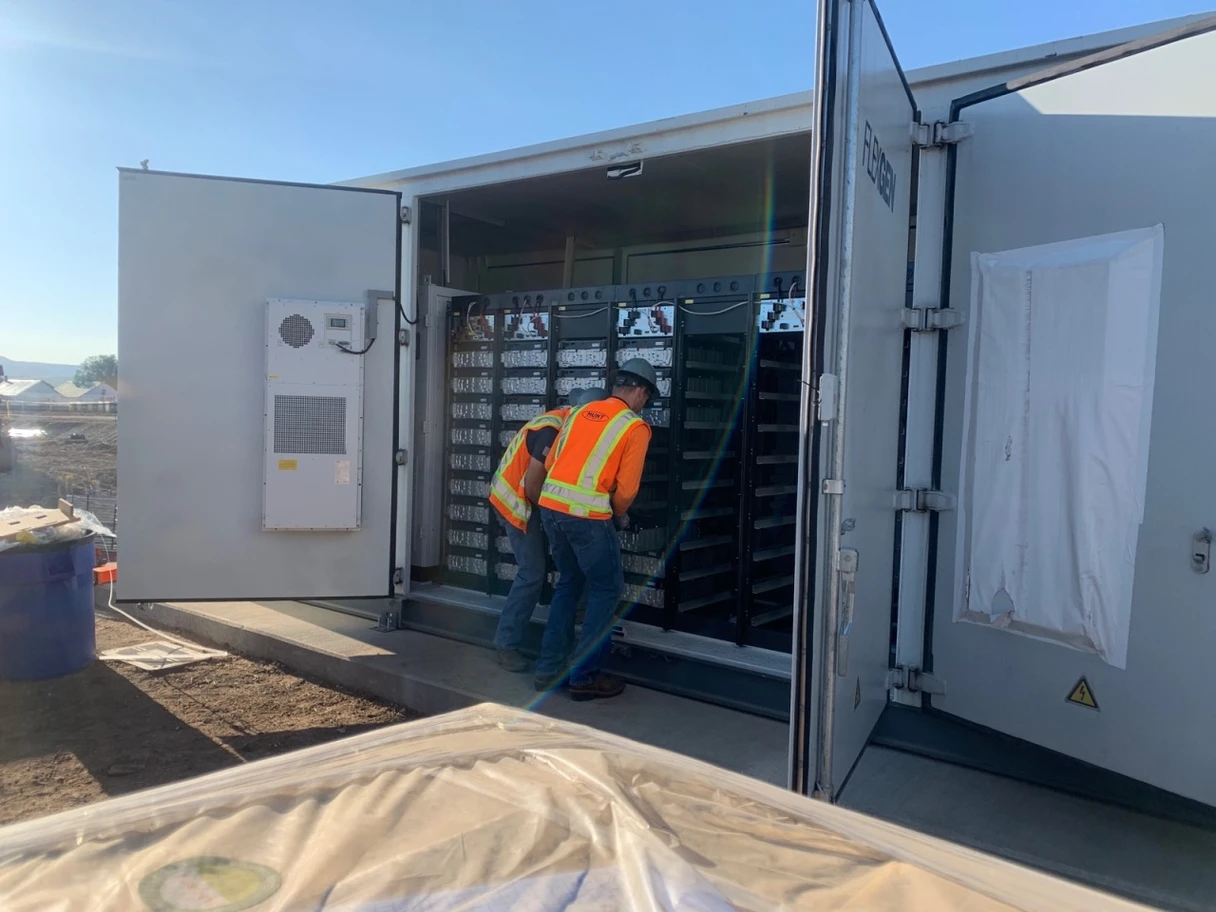In the rapidly evolving battery storage industry, setting operational benchmarks is crucial to staying competitive and delivering on committed energy promises. There has been unprecedented growth in the number of BESS projects being commissioned in the past few years, but BESS site availability hasn’t been quite as newsworthy.
That’s not to say that the industry is subjected to reduced BESS performance. FlexGen saw an annualized availability of 98% in 2023, compared to its three closest peers reported at 93%. But, the anecdotal existence of “problem sites” with sub-80% availability is surprisingly common.
Challenges to Maximizing Energy Storage Availability
The explosive growth in the industry is both a blessing and a curse for BESS asset operators and owners. While it brings unprecedented opportunities to expand energy storage capacity, it also leaves an experience gap, especially for those embarking on their initial BESS projects.
The Experience Gap
Newcomers to energy storage, from commissioning service companies to software companies to co-ops, IPP’s, banks, utilities, and EPC’s often find themselves and their chosen partners navigating uncharted waters, lacking the necessary expertise and guidance to bring BESS sites online faster and keep them on reliably.
Based on dozens of recent discussions, most new entrants are migrating from the solar space and expecting simple commissioning sequences and a similar “set it and forget it” operations and maintenance plan. But, as FlexGen has learned from its 10+ years of hands-on battery experience, the added value-generation of batteries needs to be matched with an added level of proactivity and expertise.
Battery balancing, for example, isn’t as simple as panel cleaning, and can create significant operational delays if performed manually, increasing the risk that an outage is extended and occurs during a mission-critical and revenue-critical moment.
To further add to the problem, the experience gap of BESS site operators has been stretched by ever-increasing extreme weather events while the demand to hit new installation milestones accelerates, leaving existing projects underperforming.
Another contributor to the problem is that the war for talent is a multi-industry issue, and maintaining a skilled workforce in the renewable energy industry is no exception. The rapid pace of technological advancements demands continuous learning and upskilling, and training programs are often insufficient.
Proactive vs. Reactive Management of Assets: How to Detect, Evaluate, and Act in Near-Real-Time
To overcome these challenges and manage availability effectively, companies need to adopt a proactive approach for how both people and software will help them detect, evaluate, and act in near-real-time. This proactive strategy involves:
Detect:
Asset owners need a software platform that manages a variety of alerts, from system-generated to custom-user-generated and even AI-generated. That software should also lessen the burden for training, auto-detecting signals for the most common anomalies, such as (a) bad BMU cards (b) thermal anomalies (c) voltage imbalances and (d) current imbalances.
For the best results, a team in a remote operations center (ROC) should be able to detect and manage these alerts 24/7. The individuals on this team should constantly be trained by field teams, software departments, and the other experienced ROC operators to respond quickly and accurately when issues are detected. It’s essential that both the software and employees have a closed loop process centered on constant improvement, driving availability up and operational costs down.
Evaluate:
Asset owners need an analytical layer of software that can deep-dive into the root causes of an alert within minutes, compare physical battery behavior with theoretical digital twins, and look back over months of data for trends in state of charge (SOC) and state of health (SOH). That software needs to be matched with analytical technicians and performance engineers, who have years of experience in a variety of markets and environmental conditions.
Act:
In the battery storage space, minutes can represent millions of dollars in revenue or the difference between delivering on your energy mission or missing the moment. In recent years, top performing sites have been successful because they are migrating common field service actions to their remote operations centers.
These elite sites are now taking those remote operations center actions and automating them with software. With automation and pre-scheduled maintenance during low-impact operating windows, sites are down for a fraction of the time. The aggregation of marginal gains that results from shifting field maintenance to remote maintenance to automated maintenance actions can stack up to several “availability points” in a year, which has real revenue impact. For example, every 3.4% difference in availability represents a $1M annual revenue impact in CAISO and a $10M NPV in PJM (using 2023 rates on a 100MWh system as the baseline assumption).
Making Informed Decisions to Optimize
The ability to make quick decisions in the energy storage industry relies on real-time data. Many players in the energy storage industry struggle because they don’t have true visibility into the state of charge (SOC) and state of health (SOH) of their sites. It is difficult to proactively manage BESS and optimize availability without a software solution that delivers real-time insights.
Without analytical software to bolster their energy management system (EMS), many BESS operators can identify that they have a problem but struggle to pinpoint the root cause. This can lead to frequent and extended outages.
A third-party services company that works across multiple vendors recently told FlexGen that its software stands alone in the ability to detect a problem and evaluate the root cause down to the module level within seconds. In fact, the vague data in other platforms not only delays corrective action but increases operational drag across multiple vendors as it often creates what they call a “multi-week finger-pointing exercise.”
If the root of an issue can’t be identified at the time of an alert, issues linger and escalate, affecting overall project performance. Fortunately, some analytical software solutions have kept pace with the industry, allowing site operators to make proactive and informed decisions.
While this is an immediate issue causing operational and financial pain today, maintaining the peak availability over the entire 20+ year BESS lifespan requires updating software, improving operational procedures, and augmenting hardware with a vendor-agnostic approach. These processes should be considered early in the planning process, as they can result in a $90M NPV difference when sub-standard availability and operating range are multiplied across multiple decades.
The Consequences of Not Optimizing Availability
In a fast-moving industry like energy storage, it is common for asset operators and owners to be unsure of what constitutes "normal" performance. When it is difficult to gauge success and identify areas for improvement, availability suffers over time. For those operating in the energy storage industry, poor availability has significant consequences for the longevity and ROI of a project.
Maximizing True Tradable Power (TTP)
Critical to understanding energy storage availability is knowing the true tradable power for a BESS site. Tradable power refers to the amount of energy or capacity that can be effectively sold or utilized in the market. Failing to provide energy when the grid signals a BESS site damages profitability, trust among stakeholders, and the ability to make informed decisions down the line.
It is crucial to measure and track this metric accurately to understand the real value of a company's assets. By optimizing operations and addressing inefficiencies, companies can increase their actual tradable power, thereby enhancing their market position and profitability. In a recent internal study, FlexGen calculated the NPV of operating at a 60% operating range (lower limit of 20% and upper limit of 80%) versus operating at a 95% range can be as much as $90M over the life of a project.
Furthermore, penalties associated with Power Purchase Agreements (PPA) add to the pressure of maximizing ROI when energy storage operators fail to meet agreed-upon standards. These penalties can be substantial, as they reflect consequences of a grid that doesn’t reliably meet energy demand. By focusing on optimizing tradable power and addressing the associated penalties, companies can make more informed decisions and enhance their financial performance.
The Financial Impact of "Slight" Underperformance Over 20 Years
Thanks to the very public and reportable output that exists in the utility-scale solar space, it’s theoretically easy to measure the financial impact of underperformance. But, that requires knowing what “good performance” looks like.
As a result of a recent 60-day performance audit, FlexGen developed a financial calculator to help estimate the 20-year opportunity cost that a customer was missing by operating their site conservatively between a lower limit of 10% and upper limit of 90%. The result was a NPV of $10M, and that customer immediately invested in battery balancing and made some warranty claims to avoid millions in lost opportunity.
Want more visibility into the true availability and ROI of your project?
Schedule a call with an expert to learn about two tools that help you make better decisions: our 60-day Analytic Diagnostic and our Financial Impact Calculator.





